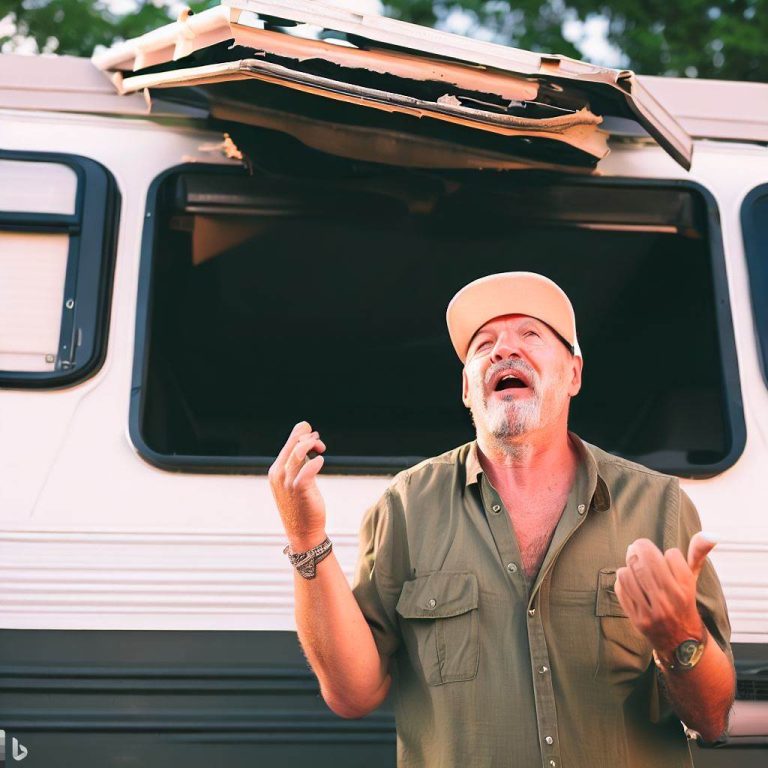
RV Roof Maintenance and Replacement: Tips for Longevity and Protection
Your RV’s roof is its first line of defense against the elements, safeguarding you from rain, sun, snow, and wind. However, it’s often one of the most overlooked aspects of maintenance. A well-maintained roof ensures a comfortable and leak-free living space, making it essential to prioritize its care. In this article, we’ll delve into the importance of RV roof maintenance, provide valuable tips to extend its lifespan, and guide you through the process of roof replacement when it becomes necessary.
Why RV Roof Maintenance Matters
The roof of your RV plays a vital role in its structural integrity and your overall comfort. Neglecting roof maintenance can lead to water leaks, rot, mold growth, and even compromise the entire structure. Regular roof inspections and maintenance can prevent costly repairs down the line.
1. Regular Inspections
Performing routine roof inspections is crucial. Before and after every trip, examine the roof for signs of damage, such as cracks, tears, or punctures. Look around the seams, edges, and corners for any visible issues.
2. Cleaning
Clean your RV’s roof at least twice a year to remove dirt, debris, and grime that can accumulate and cause damage. Use a mild soap or specialized RV roof cleaner and a soft brush or cloth. Avoid abrasive cleaners that can deteriorate the roof material.
3. Preventive Measures
Invest in preventive measures to protect your roof. Apply a UV protectant or sealant specifically designed for your roof material. This helps prevent damage from prolonged sun exposure and extends the life of your roof.
4. Trim Overhanging Branches
Parking your RV under trees might provide shade, but it can also pose a threat to your roof. Overhanging branches can scratch the roof surface and drop debris that can lead to damage.
5. Address Leaks Promptly
If you notice any signs of water leaks inside your RV, address them immediately. Water damage can spread quickly and cause extensive harm. Locate the source of the leak and repair it to prevent further issues.
6. Maintenance Based on Roof Material
Different RVs use various roof materials, such as rubber, fiberglass, or aluminum. Each material has its unique maintenance requirements. Research and follow the manufacturer’s guidelines for your specific roof material.
When to Consider Roof Replacement
Despite diligent maintenance, there might come a time when roof replacement becomes necessary due to wear and tear, extensive damage, or simply the age of your RV. Here’s how to know when it’s time for a new roof:
1. Severe Damage:
If your roof has sustained extensive damage from accidents, fallen branches, or harsh weather conditions, it might be more cost-effective to replace it rather than attempt repairs.
2. Age:
The lifespan of an RV roof varies based on the material used, but as your RV ages, its roof will naturally degrade. If your roof is nearing the end of its expected lifespan, it’s wise to consider replacement to avoid potential leaks and structural issues.
3. Frequent Leaks:
If you find yourself constantly battling leaks despite regular maintenance, it could be an indication that the roof’s integrity has been compromised. Replacing the roof can provide a fresh start and prevent future leak-related headaches.
4. Structural Issues:
If your RV’s roof has sagging areas, extensive water damage, or visible structural problems, it’s a clear sign that replacement is necessary to ensure your safety and comfort.
The Roof Replacement Process
Roof replacement might seem daunting, but with the right approach, it can be a manageable project. Here’s a general overview of the roof replacement process:
1. Assess Your Needs:
Determine the type of roof material that best suits your RV and your budget. Consult with professionals or do thorough research before making a decision.
2. Gather Materials and Tools:
Depending on the complexity of the project, you might need various tools, adhesives, and materials specific to your chosen roof type. Ensure you have everything ready before starting.
3. Prepare the RV:
Remove any accessories, vents, or items attached to the roof. Carefully clean the roof surface and make sure it’s free from debris.
4. Remove the Old Roof:
If you’re replacing the entire roof, carefully remove the old material while taking precautions not to damage the underlying structure.
5. Install the New Roof:
Follow manufacturer guidelines or consult with professionals to properly install the new roof material. Ensure a secure and watertight fit.
6. Reattach Accessories:
After the new roof is in place, reattach any accessories, vents, or items you removed during the preparation phase.
7. Test for Leaks:
Before considering the project complete, perform a thorough leak test. Use a hose to simulate rainfall and check for any water penetration.
Conclusion
Caring for your RV’s roof is essential to ensure a comfortable, leak-free, and enjoyable travel experience. Regular maintenance and timely replacement when needed can save you from costly repairs and preserve the overall quality of your vehicle. By following these tips and being proactive in your roof care, you’ll be well on your way to enjoying your RV adventures for years to come.